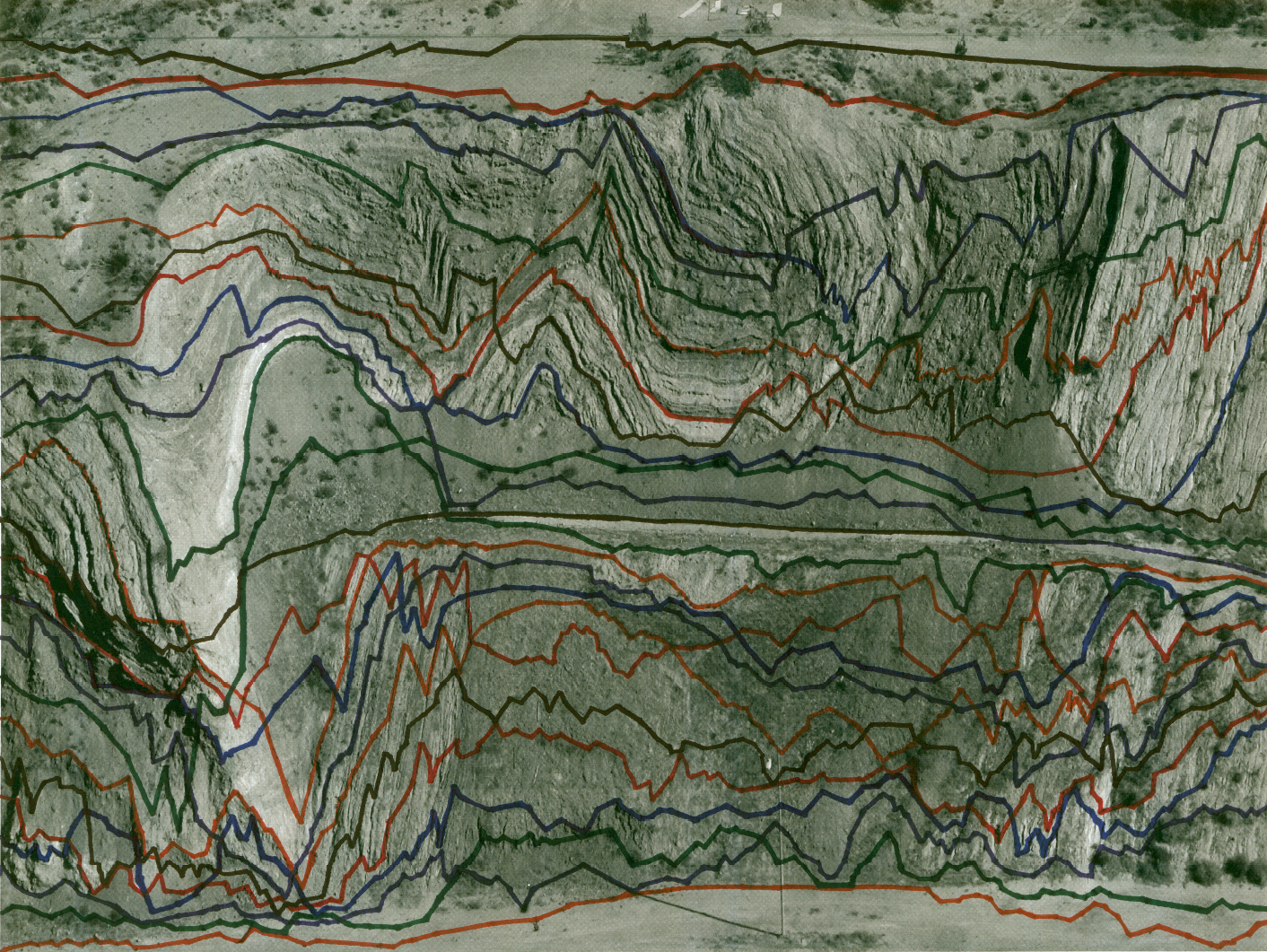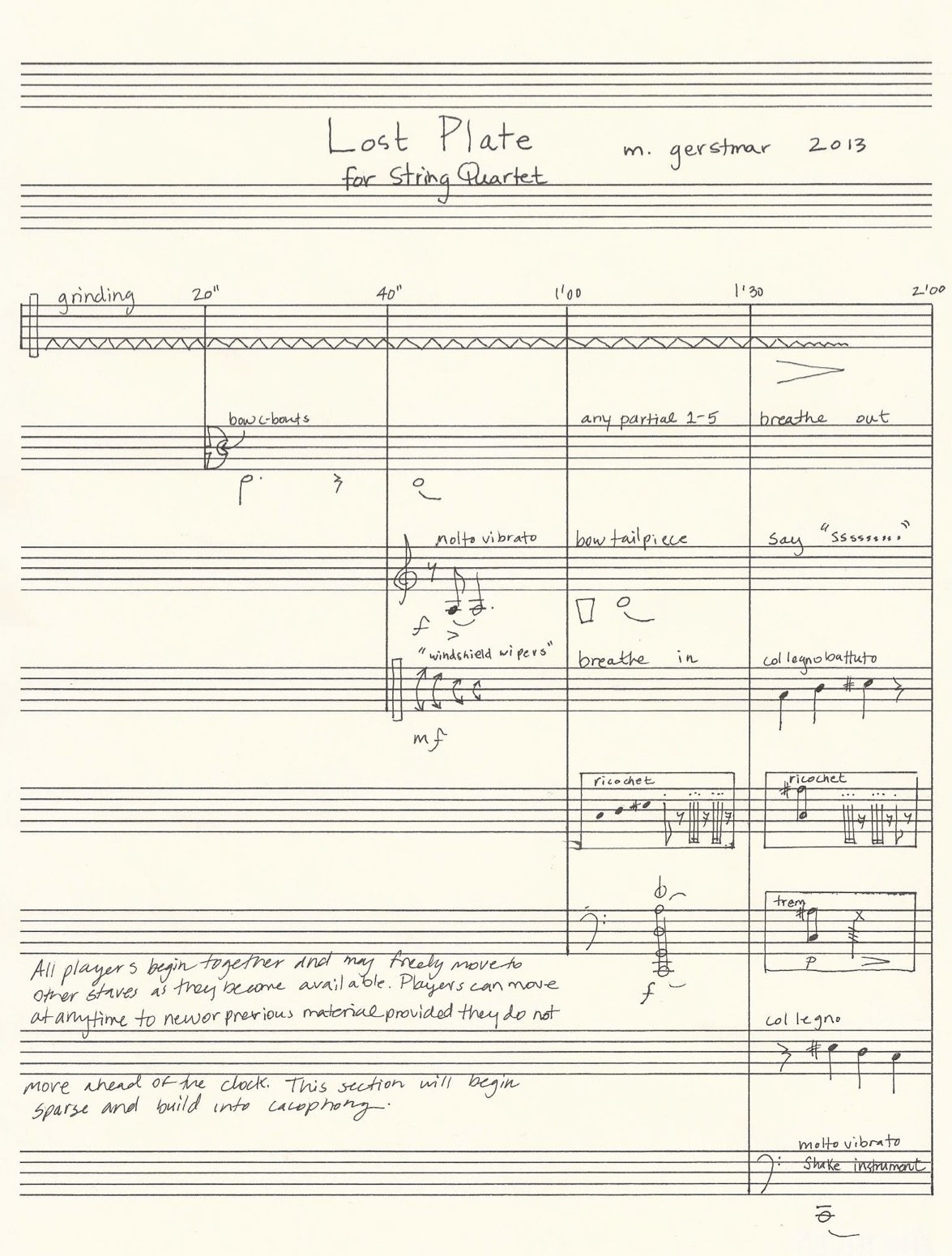Graphic Design by Sarah Faith Gottesdiener
ALBUM RELEASE / PERFORMANCE / INSTALLATION
Sunday / September 29th / 7 pm
FREE
Performance and video installation “SYMPATHETIC RELEASE” by Barnett Cohen & Jules Gimbrone with select performance by contributors to FAULT LINES.
FAULT LINES is a compilation LP, book and digital download.
This project started as a desire to cultivate a space where sound becomes a physical presence. By locating artists inside a geological feature of the earth, FAULT LINES encouraged composers to create time-based work that resembles the extreme temporal scales of tectonic plates. Whether these plates appear deeply still or silent, at any moment they can send waves of massive movement and disruption. This buildup of potential energy or stress within a fault line is stored until the strain is released, causing rupture. This latent energy is analogous to the medium of recorded sound, specifically the vinyl LP that holds kinetic energy in its rotation. Although each composer worked independently from Jen Hutton’s text, the pieces are connected by their experimentation in timbre, a textural feature that helps to objectify sounds, and gives differentiation regardless of pitch or loudness. A focus on the physicality of sound textures, and the spaces that these sounds inhabit, appear to dictate the artists’ compositional choices. Often sound is considered an abstract, liminal, and/or transitory medium given meaning through its narrative thrust -- where it takes the listener through a linear, time-based journey. FAULT LINES, however, is an attempt to give sound a physical body, a body where time bends, is held, expands, and is again made solid.
– Jules Gimbrone, Curator
Postcard with digital download -
Photo by Bridget Batch – The image is called Glow, San Andreas. It is part of an evolving series called Glow that features interventions performed for long camera exposures in locations marked by geologic instability. In this image, I am performing a 20 minute dance – while holding a light – over the San Andreas fault, near Desert Hot Springs, CA. The line I create traces the fault but also evokes earthquake lights, a strange and not entirely scientifically proven phenomenon of eerie glowing lights occurring during certain earthquakes.
Rock is a timepiece of the extrapresent, the long now. Its tick is fixed. A piezoelectric pulse ripples along its internal lattices. Time is compressed in rock’s strata of accrued sediment, in its record of heave and push, in the gravity of its dead weight. Its temporality is outside of “this room” and “this five minutes.” It is a reliable mnemonic of all tenses. As a cool dark thing in your hand, a rock gives time a texture.
For all its apparent stillness, rock is aroused along fault lines: breaks, ruptures, discontinuities, defects. These errors express the earth as a symptomatic body assembled from mutated parts. Each part—more specifically, each tectonic plate—has a behavior of movement independent of all the others, even as they seek equilibrium. From the Greek, orogenic belts (oros = “mountain” + genesis = “creation, origin”) are swaths of deformed rock between plates. In these areas the terrain is pushed from side to side until it lumps in the middle. On a part of each plate’s opposite edge, a rift is constantly being re-mortared with magma. The body scars, the body heals.
Also from the Greek, erogenous zones (eros = ”love”) are areas on the body vulnerable to touch. To press your fingertips on any of these areas—neck, lips, genitals—elicits a specific somatic response. Likewise, a practitioner of craniosacral therapy presses their fingertips along the sutures of the skull, adjusting the flow of cerebrospinal fluid underneath. And those practitioners who press their fingertips on the apparatuses of musical instruments—keys, valves, strings—tell me what they do is too a necessary form of release. Or therapy.
Faults are not vectors drawn on the foundation of the earth, but jogs in the terrain, land buckled and thrown. They are deep cuts shaped by tension. They don’t disappear. In my own body, I seek relief as the practitioners do. I rub my fingers on my temples to assuage the throb of a migraine. I press my hands on my body to negate an absence. Stress animates those errant cracks and folds: dip, strike-slip, torque and twist. I isolate my faults; I am constantly reassembling myself. When my right knee buckles, my left hip adapts. When my neck strains, my shoulders slump. Each part of my body adjusts, each part settles into a new shape. At night I grind my teeth, a habit I suspect will continue in some other form after I’ve ground my jaws down to their gums.
I do not know for how long I might lie here, drawing a line from one sensation to the next. Close to where I live, parts of the terrain jostle toward equilibrium. For the most part it’s quiet. In this lonely town, I’m one of many waiting—listening—for the “big one.” It is difficult to say when it will occur. Or if we’ll hear a thing. Along the main branch of the San Andreas fault, one tectonic plate scrapes by the other only as fast as your fingernails grow. Yet many expect the size of its release will not be relative. A pressure is building, slowly. Between those two planes, stalemate rises to petits mals shuddering along the suture. Their waveforms peak under your ears, a hushed, violent music escalating to climax. - Jen Hutton







